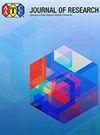用机器学习预测防火织物热老化后的力学强度
IF 1.2
4区 工程技术
Q4 MATERIALS SCIENCE, TEXTILES
引用次数: 0
摘要
热老化会导致防火织物的抗拉强度降低,从而增加穿着者的皮肤烧伤风险。标准化测试方法通常具有破坏性。在这项研究中,机器学习被应用于预测热暴露后的拉伸强度。从已发表的文章中获得训练数据,并确定了影响织物抗拉强度的七个特征。结果表明,机器学习模型的平均R2和RMSE分别为0.83和135.40,优于传统统计模型(R2=0.45,RMSE=238.41),GBR产生了最好的预测结果(R2=0.95,RMSE=77.42)。五个特征(纤维、重量、测试方向、暴露时间和热通量密度)足以实现更好的预测。本文章由计算机程序翻译,如有差异,请以英文原文为准。
Predicting the Mechanical Strength of Fire Protective Fabrics after Thermal Aging using Machine Learning
Thermal aging leads to a reduction in the tensile strength of fire protective fabrics, which increases the skin burn risks of the wearer. Standardized test methods are generally destructive. In this study, machine learning was applied to predict the tensile strength after heat exposure. Training data was obtained from published articles, and seven features that affect the tensile strength of the fabric were determined. The results indicated that the average R2 and RMSE of machine learning models was 0.83 and 135.40, respectively, which was better than the traditional statistical model (R2 = 0.45, RMSE = 238.41). Among all the models, GBR produced the best prediction result (R2 = 0.95, RMSE = 77.42). Five features (fiber, weight, testing direction, exposure time, and heat flux density) were sufficient to achieve a better prediction.
求助全文
通过发布文献求助,成功后即可免费获取论文全文。
去求助
来源期刊

AATCC Journal of Research
MATERIALS SCIENCE, TEXTILES-
CiteScore
1.30
自引率
0.00%
发文量
34
期刊介绍:
AATCC Journal of Research. This textile research journal has a broad scope: from advanced materials, fibers, and textile and polymer chemistry, to color science, apparel design, and sustainability.
Now indexed by Science Citation Index Extended (SCIE) and discoverable in the Clarivate Analytics Web of Science Core Collection! The Journal’s impact factor is available in Journal Citation Reports.
 求助内容:
求助内容: 应助结果提醒方式:
应助结果提醒方式:


